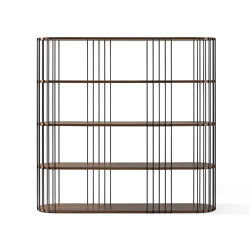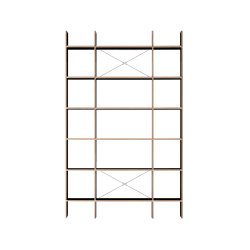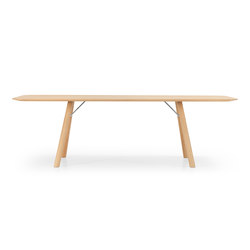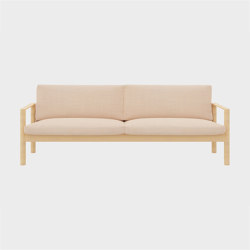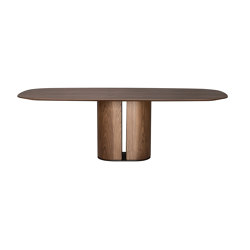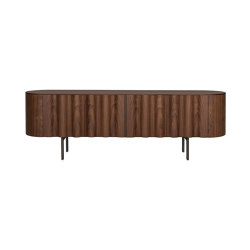Akari cabinet
Cabinets from Time & Style
Product description
W1062×D450×H1685
Concept
shoji. In the old days, the paper of the shoji was changed at the end of the year in every household to remove the dirt built up during the year. With their fingers going numb with cold, people would dip a brush in a bucket of glue, apply the glue to the cedar wood lattice with a brush, carefully attach a sheet of Japanese paper to it, and cut off the excess paper with a knife.
Though we used to be able to watch people changing the shoji paper in their gardens or in front of their houses at the end of the year, today we rarely see people doing that. Shoji is made by pasting Japanese paper on a wooden lattice. In the old times, handmade Japanese washi paper was used, as it was very tough and resistant to wind and rain, and therefore a suitable material for shoji, which were typically used as a partition between indoor and outdoor spaces. Shoji with translucent handmade paper softened the heat from the sun coming inside a house in summer and provided a shield against the cold winds in winter while letting warm sunlight in. Today, most shoji are made using machine-made Japanese washi paper made from pulp, not genuine handmade washi paper made from paper mulberry.
Such machine-made paper, being solid white and lacking texture and toughness, does not have the functionality, look, and feel of traditional hand-made Japanese paper. Today’s Japanese people have lost many traditions by their own choice. We succeeded in making a product that has the sentimental atmosphere of shoji by condensing the world of shoji into a cabinet and using genuine materials. This is how we pay homage to small Japanese houses and shoji with keenly-felt nostalgia. We use Japanese washi paper handmade by a Japanese papermaker in the Mino region. The Japanese paper is pasted on the joinery frames made by a joiner, and the frames are attached to the oak door frames made in our own factory in Asahikawa City along with the cabinet body. The doors are sliding doors just like the shoji of the past. Frosted glass panels are used for the top board, bottom board, and shelf boards to let the light through the cabinet. We made sure its details were very Japanese and named it Akari, hoping that it will shine in the sunlight.
Though we used to be able to watch people changing the shoji paper in their gardens or in front of their houses at the end of the year, today we rarely see people doing that. Shoji is made by pasting Japanese paper on a wooden lattice. In the old times, handmade Japanese washi paper was used, as it was very tough and resistant to wind and rain, and therefore a suitable material for shoji, which were typically used as a partition between indoor and outdoor spaces. Shoji with translucent handmade paper softened the heat from the sun coming inside a house in summer and provided a shield against the cold winds in winter while letting warm sunlight in. Today, most shoji are made using machine-made Japanese washi paper made from pulp, not genuine handmade washi paper made from paper mulberry.
Such machine-made paper, being solid white and lacking texture and toughness, does not have the functionality, look, and feel of traditional hand-made Japanese paper. Today’s Japanese people have lost many traditions by their own choice. We succeeded in making a product that has the sentimental atmosphere of shoji by condensing the world of shoji into a cabinet and using genuine materials. This is how we pay homage to small Japanese houses and shoji with keenly-felt nostalgia. We use Japanese washi paper handmade by a Japanese papermaker in the Mino region. The Japanese paper is pasted on the joinery frames made by a joiner, and the frames are attached to the oak door frames made in our own factory in Asahikawa City along with the cabinet body. The doors are sliding doors just like the shoji of the past. Frosted glass panels are used for the top board, bottom board, and shelf boards to let the light through the cabinet. We made sure its details were very Japanese and named it Akari, hoping that it will shine in the sunlight.
More about this product
Categorised in Storage - Cabinets - Cupboards - 4-leg base - with sliding doors - wall-standing - free-standing - open base - Wood - Solid wood - Residential.
Part of the collection
CABINET / SHELF.
Manufacturer
Time & Style
Family
Akari Cabinet
Architonic ID
20085889
Order number
C-821
Year of Launch
2019
Similar products
Related Projects
This product has been archived. Product information may no longer be up to date.
Similar products
Where to buy this product
Where to buy this product




